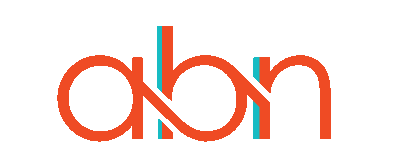Balancing Employee Productivity and Well-Being
As a leader, you know all too well the delicate balance between driving employee productivity and ensuring the overall well-being of your team. It’s a challenge that can make or break the success of your organization. Fail to prioritize your team’s mental and physical health, and you risk burnt-out, disengaged employees. But focus too narrowly on output, and you’ll quickly see morale plummet and performance suffer. The key is finding the sweet spot where your team feels supported and motivated. Here’s how to get there with thoughtful, effective strategies.
Create Continuous Feedback Loops
While regular one-on-one meetings are helpful, consider setting up an ongoing feedback system using digital tools. Platforms for instant messaging, video calls, project tracking, and performance reviews can help you and your team share quick updates, give feedback promptly, and address issues as they arise. Encouraging team feedback builds trust and collaboration.
To make this work:
- Train your team on giving and receiving constructive feedback.
- Set clear guidelines for using the platforms.
- Regularly review data to spot trends and areas for improvement.
Key benefit: Faster feedback keeps the team aligned, improves morale, and helps you address small issues before they grow into bigger ones.
Improve Transparency Through Digital Tools
Digital tools like Slack or Microsoft Teams can significantly improve team communication. These platforms create open, collaborative spaces where team members can easily share ideas and concerns.
To enhance transparency:
- Set up channels for both work-related and casual chats.
- Add anonymous suggestions boxes for honest feedback.
- Establish guidelines for respectful, professional communication.
Key benefit: Modern communication tools help build a transparent, inclusive culture, boosting engagement and more creative solutions.
Personalize Learning and Development Programs
Boost engagement with personalized growth opportunities. AI-driven learning platforms adapt to individual team member’s skills, interests, and career goals. These systems use machine learning algorithms to suggest tailored courses, projects, and mentorship.
Implementation tips:
- Choose a platform with short, on-demand modules.
- Encourage regular participation.
- Use data analytics to track progress and adjust learning plans as needed.
Key benefit: Personalized, tech-driven learning programs keep your team engaged and continuously growing.
Promote Digital Wellness and a Flexible Work Culture
In our always-connected world, achieving true work-life balance looks different. As a leader, set the tone by embracing digital wellness and offering flexible work options.
Strategies to try:
- Encourage flexible work hours that match peak productivity.
- Introduce “no-meeting” days for focus time.
- Offer online meditation tools or fitness challenges.
- Check in regularly to support digital well-being.
Key benefit: Promoting digital wellness and flexible schedules leads to a more balanced, productive team, improving both individual well-being and overall performance.
Build a Supportive, Inclusive Work Environment
Well-being goes beyond work-life balance; it’s about ensuring that team members feel safe, respected, and valued.
To create an inclusive environment:
- Address discrimination or harassment immediately.
- Take time to understand each team member’s unique needs.
- Organize regular team-building activities.
- Actively promote a positive and inclusive culture.
Key benefit: A supportive, inclusive workplace boosts morale and productivity, leading to a more engaged and cohesive team.
Use Data-Driven Insights
Real-time feedback tools like pulse surveys and instant feedback apps give you powerful insights into employee satisfaction and performance.
How to use data effectively:
- Regularly review feedback to spot trends.
- Assess if your engagement strategies are improving satisfaction.
- Check if your work-life balance initiatives are reducing burnout.
- Make informed decisions based on these insights.
Key benefit: Using feedback tools improves employee satisfaction, boosts overall performance, and ensures employees feel heard and valued.
Adopt a Holistic Approach to Leadership
Balancing employee productivity and well-being isn’t a one-size-fits-all solution. It’s essential to take a holistic approach that addresses your organization’s unique needs and challenges. Start with one or two strategies that align best with your team’s needs and gradually introduce others.
At the end of the day, your employees are your greatest asset. When you prioritize their well-being and support their performance, you unlock your organization’s full potential. With the right approach, you can build a workplace where productivity and happiness go hand in hand.






